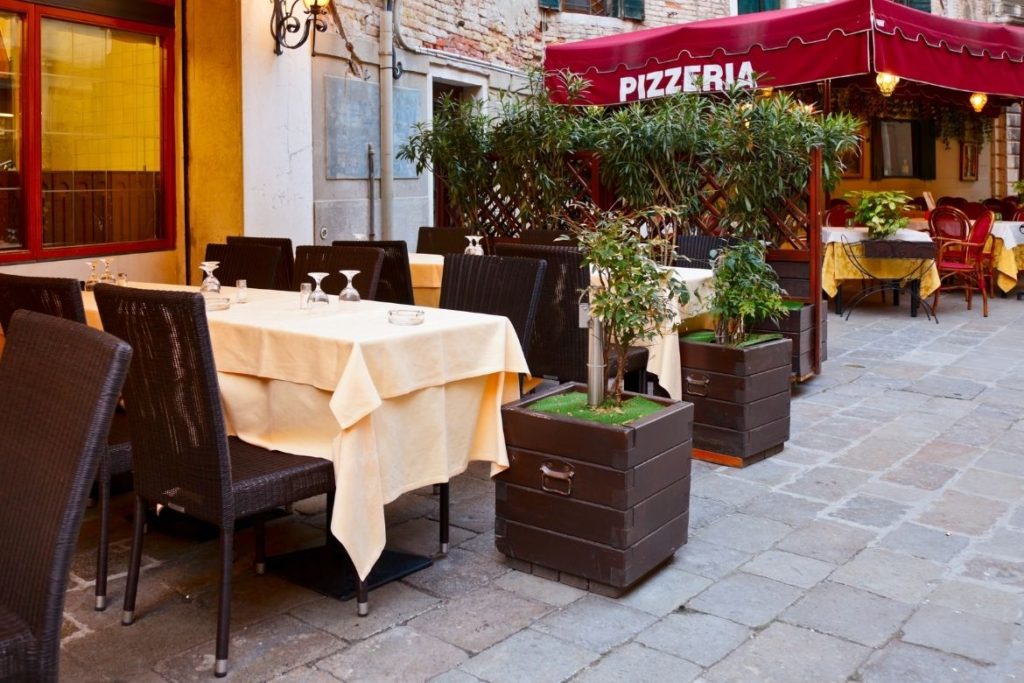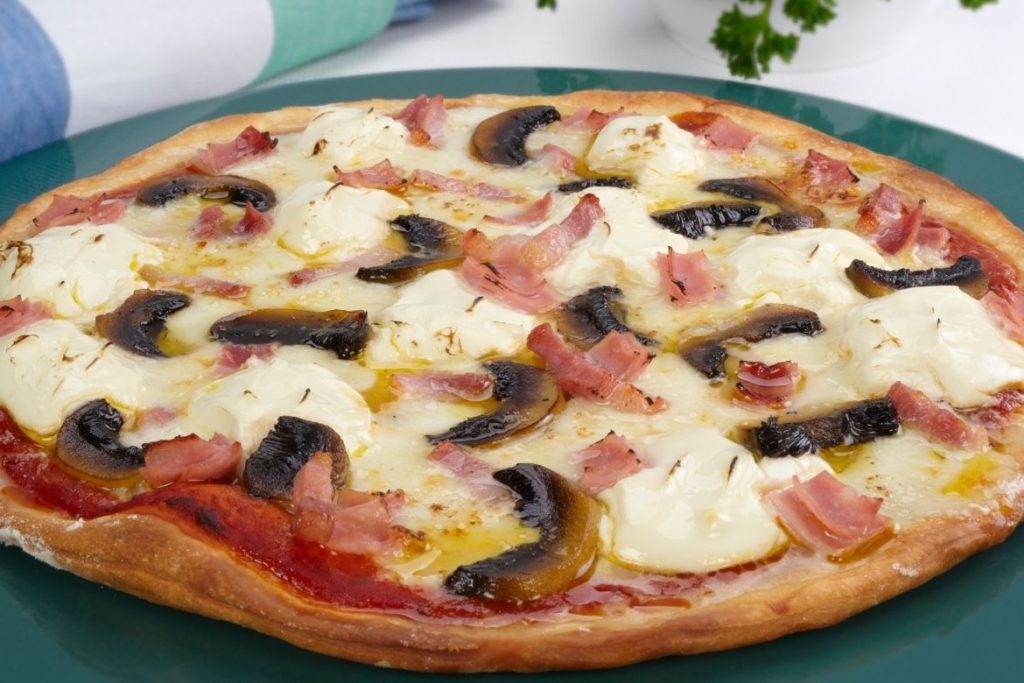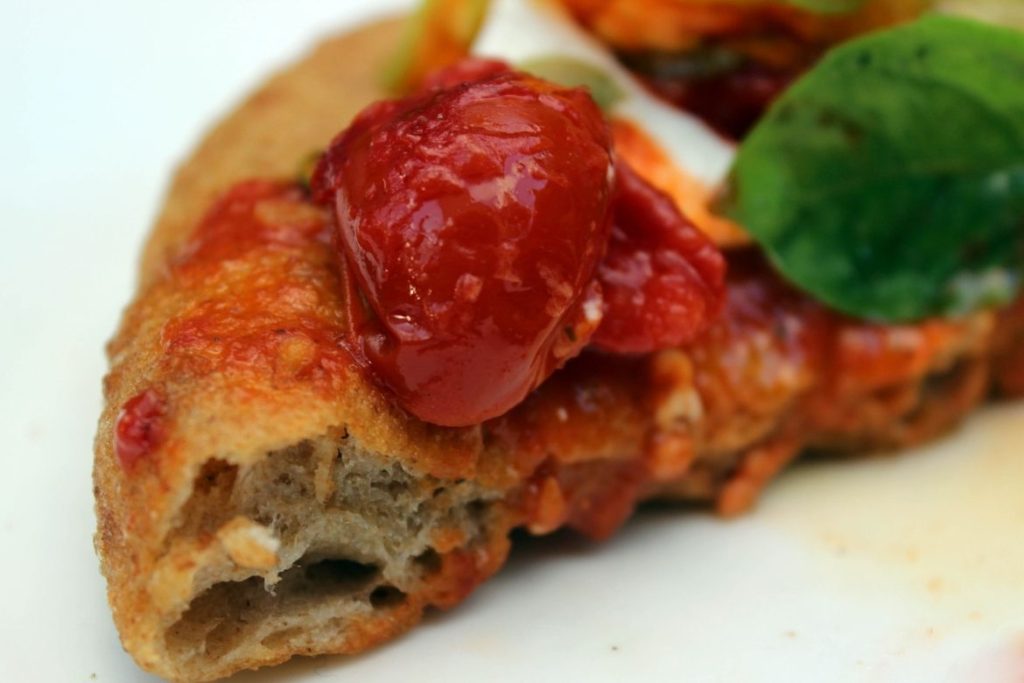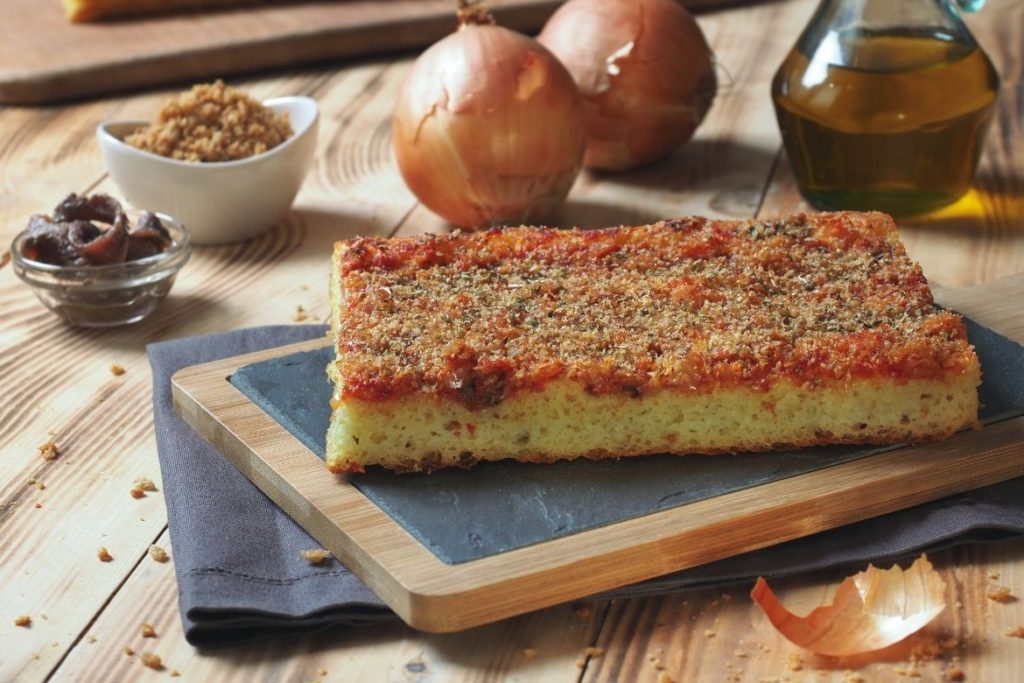Discover six authentic types of Italian pizza including pizza margherita, Neapolitan pizza, Roman pizza, and more. Enjoy a quick culinary tour of Italy while learning about the unique history of this beloved dish. You’re sure to find a new favorite!

Types of Italian Pizza: A Culinary Tour of Italy
It wouldn’t be wrong to say that pizza is the most loved food in the world. It also wouldn’t be wrong to say that most people assume there is only one Italian pizza.
The reality is, though, that each Italian region has its own particular tradition. While many think this difference is only between the language in the North and the South, not many know that the food recipes change dramatically too (pizza included!).
That’s why I thought to write about 6 authentic types of Italian pizza you should absolutely try on your next trip to Italy Because when the time comes for your vaxication (your well-deserved vacation after your vaccine!), it’ll be enticing to know that you could take a food tour of Italy and try the many different types of pizza!
Let’s dive into it!

1. Neapolitan Pizza
If there were a movie about pizza, it would probably be made in Naples —and pizza Margherita would play the main character. The legend goes that in 1889 the Neapolitan pizza maker Raffaele Esposito made a pizza in honor of the first Queen of Italy, Margherita of Savoy, and of the Italian unification. The toppings used, as you may well know, were tomato (red), mozzarella (white), and basil (green) — inspired by the colors of the national flag of Italy.
In Naples, this pizza is not only an everyday food but also a true philosophy of life. Let’s quickly explore the main features of the real Neapolitan pizza.
A Soft and Pizza Thin Crust
The first thing you’d notice is how soft and thin it is. The pizza is easy to fold and eat on the street, if necessary — except for the crust, where it’s tall and thicker. The crust encloses and stops the sauce from dripping in the back, which allows you to eat a slice with your hands.

The second main characteristic of this pizza is how it is cooked. Even if modern electric or gas ovens are almost able to replicate it, a wood oven is mandatory to give the pizza it’s bubbly crust and soft crunch. Also, the high temperatures make the cooking time very short (60-90 seconds), which is essential to avoid having your mozzarella dry on the dough!
All About the Mozzarella
Lastly, let’s talk about the mozzarella. If you ordered a Margherita in Naples and read through the ingredients, you would see it surprisingly doesn’t include mozzarella; it includes fior di latte. What exactly is that and why don’t they just say mozzarella?
The truth is that the fior di latte is a mozzarella, but it specifically refers to a mozzarella made with cow’s milk. The distinction needs to be made since you can also find, especially in the Naples area, pizza Margherita with mozzarella di bufala (mozzarella from buffalo milk). If you’ve never tried this cheese, book your next trip to Italy, order it, and then thank me later — it’s amazing!
2. Pizza Romana (Roman Pizza)
The most similar variant to Neapolitan pizza is the so-called pizza Romana. For this pizza, the dough is worked and pulled to the point of obtaining a disc with a low and uniform thickness.
There are two main differences between Neapolitan and Roman pizza:
- The absence of the crust. For this pizza, in fact, the dough is rolled out with a rolling pin, which eliminates any air created by the gases of rising.
- The consistency: the Roman pizza is crunchy (or as Italians would say, the Roma pizza scrocchia).
What makes it crunchy is both the addition of oil in the dough and the method of cooking. Unlike the Neapolitan, the Roman pizza cooks at a lower temperature and for a few minutes longer — approximately from 7 to 10 minutes at about 480°F (250°C).

With regards to the toppings, there are several different types that Romans put on their pizza, but among the most famous are tomato and mozzarella, capricciosa (i.e. tomato, mozzarella, cooked ham, olives, mushrooms, and artichokes), four seasons (same ingredients as capricciosa, but separated from each other in order to have four areas with four different flavors), and marinara (tomato, garlic, and oregano).
3. Pizza Fritta (Fried Pizza)
Fried pizza is commonly referred to as the “poor” sister of Neapolitan pizza. That’s because in the postwar period, when Italy went through a period of misery, it was difficult to obtain the ingredients to prepare a traditional pizza. Tomato and mozzarella had become a luxury that few could afford; the same could be said for the wood-ovens. Hence, the idea of fried pizza was born — a food that everyone could prepare at home without the need for an oven.
Starting from the same dough as the Neapolitan pizza, everything is fried in lard until completely golden, and then stuffed (typically with buffalo ricotta and pork cracklings).
From a simplistic popular specialty, fried pizza has now become a symbol of Neapolitan culture. It is one of the most popular street foods among rotisseries and clubs in the city.

If you ordered one in Naples today (something I highly recommend), you’d most likely get one that’s slightly different than the original recipe. Pork lard, for example, has now been replaced by oil. Most of the fillings now include Mozzarella di Bufala Campana DOP, Napoli salami, sausage and broccoli, and other local products.
The softness of the dough and the way it rises, which leaves empty internal spaces, makes it ideal to be cut in the middle and filled as desired. Another style in which you can find it is with the ingredients arranged on the surface and then wrapped.
4. Pizza al Tegamino
Pizza al tegamino (tegamino is the Italian for “pan”), or pizza “al padellino” (just another word for “pan”), is a specialty born in Piedmont, the region of the Turin area.
The legend goes that in the thirties, a pizza chef wanted to speed up the pizza preparation time. To do so, the dough — similar to that of Neapolitan pizza — was spread inside aluminum or iron pans. It was then partially seasoned with tomato sauce and then left to rest, waiting to be completed with the rest of the ingredients before moving on to cooking.
Pizza al tegamino is taller and softer than the other types of Italian pizza. To many, it looks more like focaccia; the long amount of time it rises in the pan, which generally lasts 24 hours, makes it taller.

Another characteristic is the crunchiness of the base. This is due to both the close contact with the cooking surface and to the precaution of oiling the pan before rolling out the dough. In this way, not only is it preventing the dough from sticking to the pan but also a frying effect is created at the base. This creates a crispy crust and a pleasant contrast with the softness of the top.
Its traditional version includes simple toppings: tomato, mozzarella, and oregano, or alla marinara, which is without mozzarella, but with the addition of anchovies and garlic. If you visited Turin, though, you would find it also with the most varied condiments. Yummy!
5. Pizza al Trancio (Pizza by the Slice)
Pizza al trancio (trancio is the Italian for “slice”) is to Milan what pizza al Tegamino is for Turin. It gained a foothold in the 1950s and it became a real boom in the 1980s.
It is prepared in large round metal pans (usually iron or aluminum) and is laid a few inches tall.
Traditionally, it’s baked in a wood oven, but more and more electric ovens are starting to do the job even better. Electric ovens allow us to better manage the cooking time for this type of pizza since it does not require quick and intense temperatures — as it does for Neapolitan pizza.
Pizza al trancio requires temperatures around 480°F (250°C) and it rarely cooks for more than 10 minutes. This helps the dough cook evenly and to prevent it from drying out too much; it also guarantees its softness which is its distinctive trait.

Unlike the Tegamino pizza, pizza al trancio is cut and served in triangular slices. Its thickness is usually around half an inch (1cm).
The classic Margherita slice comes with an abundant layer of mozzarella which almost completely covers the tomato sauce distributed on the surface.
RELATED POST: Italian Lemon Rosemary Olive Oil Cake
6. Sfincione (Sicilian Pizza)
Last, but certainly not least is the Palermo sfincione (pronounced SFIN-CHO-NAY). It most likely is one of the oldest Italian pizzas and it’s considered the ancestor of pizza al trancio.
The sfincione name derives from the Latin spongia, which means “sponge.” This refers to the characteristic softness of the dough. The sfincione is, in fact, about half an inch tall (1 cm), with a thin crunchy base yet soft on the top.
As for other types of pizza, the dough undergoes a double rising: the first after mixing the ingredients and forming the typical dough ball, and the second after spreading it in a pan.

Traditionally, sfincione is baked in the oven at a temperature of around 480°F (250°C). A classic recipe includes strattu (sundried tomato paste), onion, anchovies, oregano, caciocavallo (seasoned cheese), and breadcrumbs. In your next visit to Sicily, you might see it cut and served into rectangular slices.
Its taste and look are quite different from the typical Italian pizza. That’s why Sicilians are proud of their sfincione. You will find it as a main player in the Palermo street food environment.
Types of Italian Pizza: Favorite Resources
Hungry for more? Here are some additional resources:
- Plan a dream vacation to Italy: Plan your next trip to Italy with Back in Italy.
- Make your own pizza: Check out The Pizza Bible by Tony Gemignani
- Take a class: Pizza Skill offers an online pizza-making class direct from Italy (but in English).
Like this post? Save it to Pinterest!




16 comments
I had no idea that there were different types of Italian pizza. Growing up with a Maltese dad who would only eat Neapolitan pizza, I just assumed that was the only kind of “Italian” pizza.
Yes, there are so many exciting new options to try — both in Italy and at home!
Seeing all the delicious-looking pizza pictures makes me want to fly to Italy right now and eat them right away 😂. I love pizza, especially authentic Italian pizza. It’s hard to find the best kind here where we live. I will pick the pizza al trancio and the pizza al tegamino please! Hey do you happen to have a recipe for one of those pizzas? I would love to try it. Thanks!
I will update the post with some recipe links. Several people have asked about this. Enjoy!
Omg I love pizza, this is amazing!
All of these pizzas look delicious! Neapolitan is one I’ve tried, and it tastes amazing.
I love that one too!
Yum! Thanks for sharing. I hope to come to Italy one day and try all these types of pizza. They look amazing. Until then, I guess I will stick to the local pizza places 🙂
I love Italy and have traveled there several times. Hopefully, you will get to visit Italy one day, and try all the amazing types of pizza!
This is such a helpful guide, I actually did not know that much about all the different types of pizzas but I am now hungry for them all. Looking at this I would have to say that I’m more of a fan of the Neapolitan style pizza but I’m interested in trying some of the others that I might not have had, especially the Sicilian
All of these pizzas look delicious! I’m drooling all over this post! I had no idea that pizzas varied so much throughout Italy, I’ve never heard of a fried pizza before, it sounds like an intriguing idea! Thanks for the great guide!
Ohh, I think I would love Roman pizza. I always prefer a thin and crunchy pizza base.
I have to admit I wasn’t sure I was going to like fried pizza when I visited Naples but it was amazing! I still need to try a few types on your list though.
Wow! Loved this post. I learned a lot. I didn’t know there was so much regional variation in pizza styles in Italy. Based on the descriptions, I think I would love the Neopolitan the best because I love airy, bubbly crust and pizza made in a wood-burning oven.
This is such a fun post! I didn’t realize there were different types of Italian pizza until I visited Italy last year. We ordered a pizza in Rome, and I was expecting a fluffy crust, and instead, it came out crunchy! It was delicious, though. Thanks for sharing!
This is my kind of tour of Italy! Love the country, love the food!!!